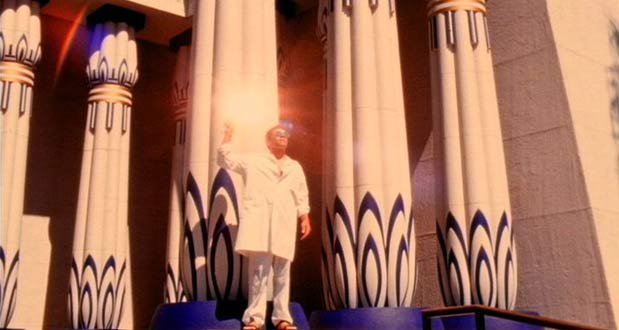Being locked out of my Sandberg studio while holiday renovations take place creates time for exploring the Amsterdam forests by bike, watching EasyJet 737’s full of anticipatory stoners land from my balcony and reading books.

The Adventures of Priscilla, Queen of the Desert. Australian Screen Classics series. Currency Press, Sydney.
Philip Brophy
Brophy’s reading of the signs within this iconic Australian film is a euphoric textual overload. Few other writers cause me to verbalise my intellectual agitation during the act of reading as Brophy does. I find myself floored by the spiky analysis, unexpected connections and sharp wit. His analysis is incisive and the language used is never jargonistic or cluttered. The author generates a highly subjective theory-fiction, akin to Baudrillard or Barthes’ analysis of the products of culture. Just as valid as any other potential reading and certainly not pandering to any pre-digested self-image of the Australian Film Industry. A highly provocative reading of the gay/straight, male/female, urban/rural energies contained in this film, the passages on Chrome-plating and the Rolls Royce Spirit of Ecstasy, Scarves and the Village Roadshow logo leave a lasting impression, as too the Freudian disfiguration of the land to make way for the Snowy Mountains Hydro Electric scheme. I come away from this book thinking where are all the other analyses of popular culture that refuse to tow an accepted ‘Margaret and David’ canonisation of certain cultural works. Where is the psycho-sexual re-reading of Antiques Roadshow, Channel 10 Late night news or The NRL Footy Show?
http://www.currency.com.au/search.aspx?type=author&author=Philip+Brophy
http://www.philipbrophy.com
Cultural Activism Today. The art of over-identification. Episode Publishers, Rotterdam.
Bavo (editors)
I have been intending to read this collection of essays for the past year. Subconsciously avoiding it until I had decent time and space to take it in perhaps. Beginning with Slavoj Zizek’s concept of over-identification with ‘the enemy’ (advanced capitalism, totalitarian regimes, neo-conservative agendas) as the only form of cultural activism that doesn’t automatically lock into a played out notion of Left-Right politics, with all the perfunctory role-playing that such a binary opposition summons up. Post-ideology activism for a post-ideological age. The argument is that to face the opponent with an image of itself so magnified, heightened and detestable is the only way of exposing the inherent hypocrisy within that system. Santiago Serra, Christoph Schlingensief, Atelier van Lieshout are discussed at length and the cultural shockwaves that their performances and installations generate. Schlingensief has always fascinated me. His ability to be the enfant terrible for German-speaking culture, making unsettling film, tv and theatre work that implicates it’s audience, funders and participants. A kind of double-bluff that provokes a social black hole of shame and responsibility, of which Schlingensief isn’t immune to either. Schlingensief’s projects discussed in this book include the African Twin Towers film installation and Bitte liebt Osterreich, a protest against the extreme-right party of Jorg Haider joining the Austrian government; In a makeshift container camp in the center of Vienna a Big Brother-type reality show asked Austrians to vote asylum seekers out of the camp and out of the country. The ‘most integrated’ refugee at the end of the game won a residence permit. A superb analysis of the Slovenian industral band Laibach is undertaken by Alexei Monroe, dismantling their seemingly ultra-nationalist symbols such as the Slovenian Stag, Alpine romanticist oil painting and traditional folk costume. True to the image of themselves as ‘State Artists’, Laibach’s administering organisation NSK offers a passport to the public from their website for admission to their ‘state in time’. All the artists discussed in this volume keep their poker face. It is an ambiguous and complex gesture that provides no easy recuperation or dismissal.
http://www.niederer.info/new_site/archives/23
http://www.bavo.biz
Laibach Live 14.11.03 Ljubljana, Slovenia
httpv://www.youtube.com/watch?v=6EoPI-xO4PU
Destroy All Monsters. Marion Boyars, London.
Ken Hollings
A sharply non-linear novel that runs at breakneck speed between visiting aliens, Tokyo teens, reanimated Elvis Presley and the interior monologues of the President of the Unted States, Destroy All Monsters is a thrilling read. Elliptical narratives. Cascading plots and thoroughly media-soaked characters scattered around the globe. Also highly recommended is Ken Hollings and Simon James’ ResonanceFM podcast series on American 1950’s Science Fiction, Fantasy and Fact; how the cold war, space race and the very real ‘little green man’ hysteria influenced popular culture and vice versa: Welcome to Mars
http://readers.penguin.co.uk/nf/shared/WebDisplay/0,,74271_1_12,00.html
http://www.kenhollings.com










